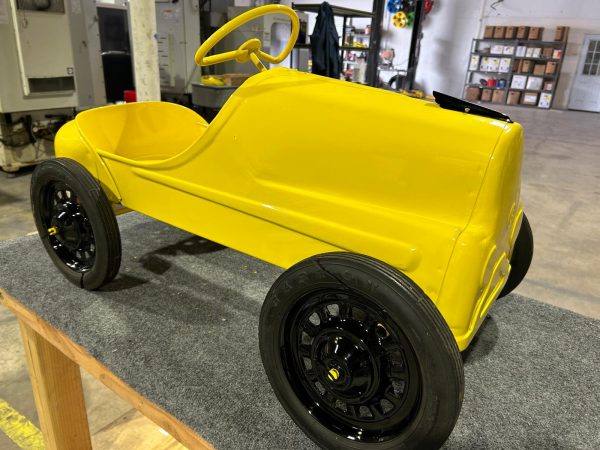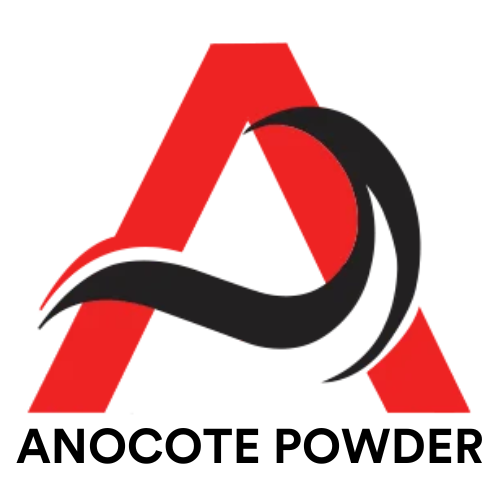
When comparing finishing options for metal surfaces, powder coat paint stands apart from traditional liquid coatings in fundamental ways. This dry finishing process applies color and protection without solvents, creating a finish that bonds differently to metal substrates than conventional paint.
The difference starts with composition. Traditional paint relies on liquid carriers that evaporate during drying, while powder coating paints use finely ground particles of pigment and resin. These particles are electrostatically charged and sprayed onto metal surfaces, then cured under heat to form a protective skin.
This process delivers results that outlast and outperform standard paint in most applications. The cured finish resists chipping, scratching, fading, and wearing better than liquid alternatives. For businesses and property owners in San Diego seeking long-term surface protection, understanding these differences impacts both immediate project costs and long-term maintenance expenses.
The Composition That Changes Everything
Powder coating paints contain no solvents. The formula combines resin, pigments, flow modifiers, and other additives in a dry powder form. This composition eliminates the volatile organic compounds (VOCs) found in traditional paints.
Liquid paint, by contrast, suspends pigments in a solvent base that must evaporate for the coating to dry. This fundamental difference affects application methods, curing processes, and final performance characteristics.
How the Powder Coat Painting Process Works
The application process differs significantly from brushing or spraying liquid paint. Metal parts must be thoroughly cleaned and often pretreated to ensure proper adhesion. An electrostatic spray gun charges the powder particles, causing them to attract to the grounded metal surface.
Once coated, parts enter a curing oven where temperatures typically reach 350-400°F. The heat causes the powder to melt, flow together, and chemically cross-link into a solid film. This curing process creates molecular bonds that liquid paint cannot achieve through simple evaporation.
The thickness remains uniform across the surface, eliminating runs, drips, and sags common with liquid applications.
Durability Advantages of Powder Coat Paint
Resistance to Physical Damage
Cured powder coating creates a finish significantly harder than liquid paint. The cross-linked molecular structure resists impacts that would chip or scratch conventional coatings. This makes powder coating paints ideal for items that face regular handling, outdoor exposure, or mechanical wear.
UV and Weather Protection
Outdoor metal surfaces coated with powder maintain their color and gloss longer than liquid-painted equivalents. The thick, uniform coating protects against moisture penetration, preventing rust and corrosion underneath the finish.
Chemical Resistance
Many powder formulations resist household chemicals, automotive fluids, and cleaning agents that would damage or stain traditional paint.
Environmental and Health Benefits
- Zero VOC emissions: Powder coat painting releases no volatile organic compounds during application or curing, improving air quality and eliminating solvent odors
- Recyclable overspray: Powder that doesn’t adhere to parts can be collected and reused, reducing material waste by up to 95% compared to liquid paint
- No hazardous waste: The absence of solvents means no hazardous disposal requirements for thinners, reducers, or contaminated materials
- Safer work environment: Applicators avoid exposure to toxic fumes and airborne solvents that accompany traditional painting
Application Differences and Limitations
Traditional paint works on multiple substrate types including wood, plastic, and metal. Powder coating paints require conductive surfaces and can only be applied to materials that withstand curing temperatures. This limits the process primarily to metal substrates.
The equipment investment differs substantially. Powder coating requires spray guns, a curing oven, and proper ventilation systems. Liquid paint needs only basic spray equipment or brushes. However, the per-part cost often favors powder coating in production settings due to higher efficiency and reduced waste.
Touch-ups present another consideration. Damaged liquid paint can be spot-repaired relatively easily. Powder coat paint damage typically requires stripping and recoating the entire part for a seamless finish.
Cost Considerations Over Time
- Initial application costs: Powder coating typically costs more per square foot than liquid paint due to equipment and energy requirements
- Longevity savings: The extended lifespan of powder-coated items reduces repainting frequency, lowering long-term maintenance costs
- Labor efficiency: The single-coat application of powder coat painting often eliminates the multiple-coat process required with liquid finishes
- Material efficiency: Reduced waste and overspray recovery make powder coating more economical in production environments
Best Applications for Powder Coating Paints
This finishing method excels for outdoor furniture, automotive parts, appliances, fencing, metal railings, and architectural components. Any metal item facing harsh conditions or heavy use benefits from powder coating’s protective qualities.
Indoor applications include office furniture, light fixtures, retail displays, and equipment housings. The finish provides both aesthetic appeal and functional protection without ongoing maintenance concerns.
Making the Right Choice for Your Project
Selecting between powder coat paint and traditional liquid finishes depends on substrate material, performance requirements, and budget considerations. Metal projects requiring maximum durability and minimal maintenance typically justify the powder coating investment.
Anocote Powder provides professional powder coat painting services throughout San Diego, helping businesses and property owners select and apply the right finishing solution for their metal surfaces. Contact us to discuss how powder coating can protect your next project.
The technology continues advancing with new formulations offering specialty textures, metallic effects, and enhanced performance characteristics. Understanding these differences helps you make informed decisions about protecting and finishing metal surfaces.
